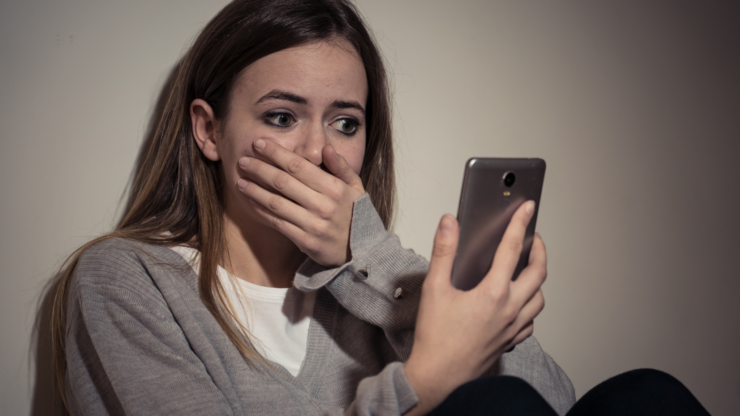Research indicates that around 31% of girls between the ages of 13 and 17 will be targeted by unwanted sexual attention online, compared to only 11% of boys. This staggering discrepancy calls for immediate action and support for girls as they navigate the digital world.
Effective methods for combating sexual cyberbullying involve a combination of education, empathy, and reporting. Parents, educators, and peers all play vital roles in helping girls fight back and prevent future occurrences. A better understanding of the signs and consequences of cyberbullying is essential for empowering girls to recognize and address online harassment in a timely and effective manner.
By taking a proactive approach to this issue, we can collectively work towards creating a safer online space for everyone, reducing the troubling statistics, and ensuring that girls feel supported and protected when they encounter digital threats. This article will provide information and resources for those interested in knowing more about how to help girls fight back against sexual cyberbullying and build their resilience in the face of online harassment.
Yes, Boys Are Impacted Too
While this issue is often associated with young women, we must recognize that young men can also be victims here. Sexual cyberbullying targeting young men. According to Steven Carlson, the creator of Cyberbully.watch, the number of boys targeted by cyberbullying may actually be higher than reported.
“Society has the false presumption that boys are always stronger, and girls are weaker,” Carlson told Parentology, adding many cases where boys are the victim go unreported because it goes against the societal view of boys.
The impact of sexual cyberbullying on young men can be really significant and quite terrible. Victims often experience really intense feelings of shame, humiliation, and isolation that, if left untreated, can lead to incidences of self-harm or violence.
Understanding Sexual Cyberbullying
Sexual cyberbullying is a form of online harassment that specifically targets individuals based on their gender, sexuality, or sexual behavior. This type of bullying can occur through various digital platforms, such as social media, messaging, gaming, and mobile phones.
Causes and Prevalence
One primary cause of sexual cyberbullying stems from deeply ingrained societal norms and attitudes related to gender and sexuality. Other common motivations include jealousy, revenge, or a desire for power and control over others.
Regarding prevalence, studies have found that girls are more likely to experience sexual cyberbullying than boys, with 32% of teen girls experiencing multiple forms of online harassment compared to 24% of teen boys. Furthermore, older teen girls (15-17 years old) face higher rates of sexual cyberbullying, with 38% experiencing multiple forms of harassment online.
Victims and Consequences
Victims of sexual cyberbullying often experience severe emotional, psychological, and social consequences. These can include heightened anxiety, depression, low self-esteem, isolation, and even suicidal thoughts or behavior. Studies have also shown that sexual cyberbullying is more prevalent among teens who have experienced child sexual abuse, which can exacerbate mental health issues.
There can also be significant long-term consequences for victims. Survivors of sexual cyberbullying may experience ongoing difficulties with trust and intimacy or suffer from lasting effects on their mental health or professional reputations.
It is essential to recognize sexual cyberbullying as a critical issue and provide support to victims. Education, prevention efforts, and ongoing conversations are crucial steps in combating this harmful behavior and creating safer digital spaces for everyone.
Legal Considerations
In the fight against sexual cyberbullying, it is essential to understand the legal aspects surrounding it. This section will explore laws and regulations as well as reporting mechanisms that can help protect and support victims of sexual cyberbullying.
Laws and Regulations
In the United States, both federal and state laws have been established to prevent cyberbullying and protect targeted individuals. Each jurisdiction, including all 50 states, the District of Columbia, and U.S. territories, addresses bullying differently with laws, policies, and regulations in place (StopBullying.gov).
At the federal level, schools are required to take reasonable steps when responding to harassment and ensure there are grievance procedures for students to file complaints (StopBullying.gov). The prevention and protection against retaliation for targeted students, complainant(s), or witnesses are also ensured at the federal level.
Reporting Mechanisms
When dealing with sexual cyberbullying, it is crucial to know how and where to report the incident. In many cases, the incident can be reported to the platform where it took place, such as social media or gaming platforms. Most platforms have their own policies and procedures for handling cyberbullying and harassment issues.
For issues that involve criminal activities or more severe cases, it is essential to notify local law enforcement or contact the Office on Violence Against Women, a part of the U.S. Department of Justice that deals with legal and policy issues regarding violence against women, including stalking (Office of Justice Programs).
In school environments, sexual cyberbullying incidents should be reported to school administration or counselors so they can take appropriate action, as they are active participants in responding to harassment issues.

Preventive Measures
Education and Awareness
One of the most effective ways to combat sexual cyberbullying is through education and awareness. Teaching young girls about the dangers of sharing sensitive information online and how to recognize inappropriate behavior can help prevent harassment. Parents, schools, and communities should work together to provide resources and educational materials to raise awareness about cyberbullying.
Online platforms and social media networks can also play a role in educating users about sexual cyberbullying and providing resources on how to deal with or report such incidents. Encouraging open discussion among peers and support networks can be an effective way to combat the negative effects of harassment and promote a safer online environment for all.
Setting Boundaries
Setting boundaries in digital interactions is an essential step in preventing sexual cyberbullying. Girls need to be encouraged to create strong and unique passwords for their accounts and devices to reduce the risk of unauthorized access. Furthermore, it is important for them to learn how to manage their online privacy settings on different platforms to control who can view and interact with their content.
In addition to securing their online accounts, it is crucial for girls to develop the skills to assert their personal boundaries and communicate clearly if they feel uncomfortable or unsafe in any online interaction. Encouraging this assertiveness can help create a sense of empowerment and resilience against potential instances of sexual cyberbullying.
Developing Support Systems
In the fight against sexual cyberbullying, it is crucial for girls to have access to strong support systems. These support systems provide both emotional backing and professional help to navigate the challenges posed by online harassment. Having access to proper support networks helps victims recover and prevent further victimization.
Emotional Support
Emotional support comes in the form of friends, family, and trusted community members who can provide comfort, understanding, and encouragement. Open communication lines are essential, as victims should feel comfortable discussing their experiences without fear of judgment or blame. Some practical ways to offer emotional support include:
- Actively listening to the victim’s experiences and validating their feelings
- Reminding them that they are not at fault for the cyberbullying
- Encouraging them to take breaks from technology and engage in self-care activities
Professional Help
Depending on the severity and impact of the cyberbullying, professional help may be required. Mental health professionals, such as therapists and counselors, can provide valuable guidance and coping strategies for the emotional distress caused by sexual cyberbullying. Additionally, organizations like Cyberbully.watch offer resources and tools to help families fight back against cyberbullying and online sexual victimization.
It’s also essential for parents and educators to be knowledgeable about the issue and provide guidance on how to detect, report, and prevent sexual cyberbullying. Parents can collaborate with schools, local authorities, and other community organizations to ensure there is a safe and supportive environment for girls affected by online harassment.
In cases where the cyberbullying escalates or becomes a criminal matter, it might be necessary to seek legal advice and involve law enforcement. Reporting the incidents to social media platforms, messaging apps, and other online services may also help to address the issue and protect other potential victims.
Don’t Wait, Take Action
In the fight against sexual cyberbullying, taking action is essential to support the affected girls and create a safe online space. However, it is important to approach this issue with precise and effective strategies.
Here are some useful techniques and strategies to help girls fight back against sexual cyberbullying:
- Document the evidence: Save screenshots, messages, or photos as evidence to report or address the issue when needed. This helps in taking appropriate legal action if necessary (Greater Good).
- Block the offender: Girls should block or unfriend those who engage in sexual cyberbullying. This limits further contact and abusive behavior.
- Report to the platform: Reporting the abuse or harassment to the specific social media, messaging, or gaming platform can lead to the removal of offensive content or suspension of the offender’s account (UNICEF).
- Seek support: Girls should seek support from friends, family members, or mental health professionals to cope with the emotional impact of cyberbullying (Verywell Health).
- Alert the authorities: In extreme cases or repeated abuse, contacting law enforcement or school officials is advisable to ensure a proper investigation.










Add comment